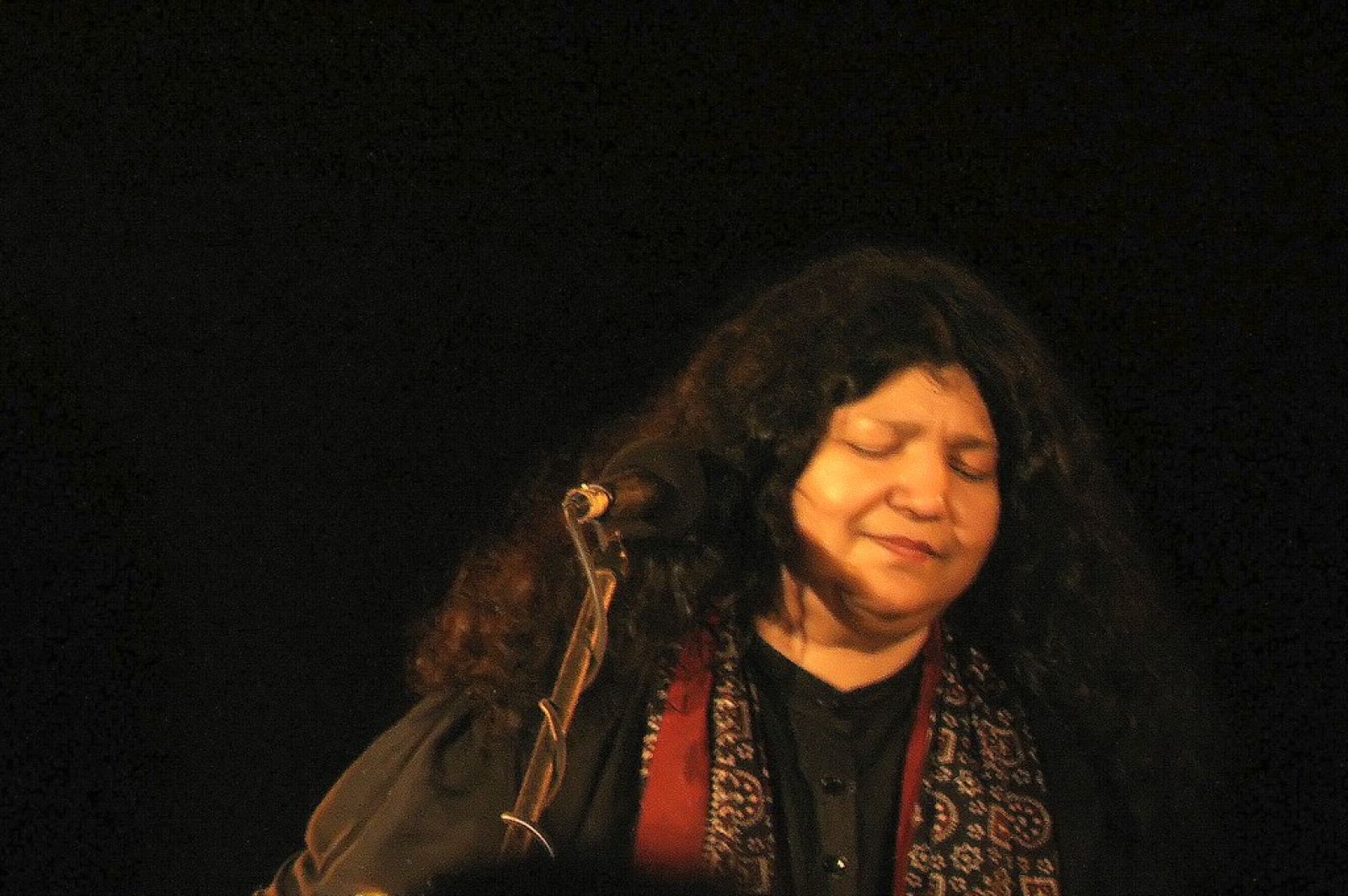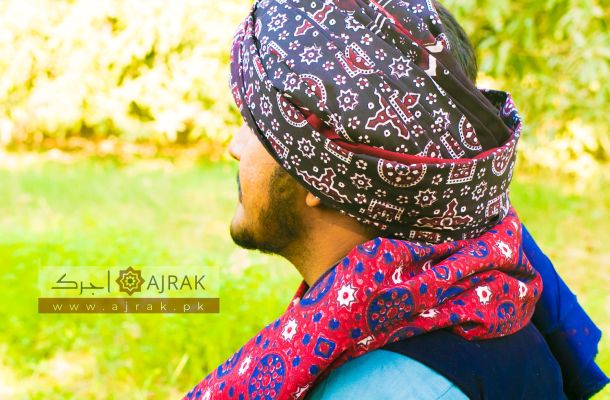Ajrak and its Impact on Abida Parveen’s Music


Exploring the Cultural Significance of Ajrak and its Impact on Abida Parveen’s Music
Ajrak is a traditional form of block-printed fabric that has been a part of the culture of Sindh, Pakistan for centuries. It is a symbol of pride and identity for the people of the region, and its vibrant colors and intricate patterns have become a source of inspiration for many artists. Abida Parveen, one of the most renowned singers of Sufi music, is no exception. Parveen has been deeply influenced by the beauty of Ajrak and its cultural significance. She has often used the imagery of Ajrak in her music, and her songs often evoke a sense of nostalgia and longing for the homeland. Her music is filled with emotion and speaks to the soul of the listener. The use of Ajrak in Parveen’s music has a profound impact on her listeners. It evokes a sense of pride and belonging in those who are familiar with the culture of Sindh. It also serves as a reminder of the beauty and richness of the culture, and the importance of preserving it. Parveen’s music is a powerful reminder of the cultural significance of Ajrak and its impact on the people of Sindh. It is a reminder of the beauty and richness of the culture, and the importance of preserving it. It is a reminder of the power of music to bring people together and to create a sense of unity and belonging. Parveen’s music is a beautiful tribute to the cultural significance of Ajrak and its impact on the people of Sindh. It is a reminder of the beauty and richness of the culture, and the importance of preserving it. It is a reminder of the power of music to bring people together and to create a sense of unity and belonging. It is a reminder of the importance of respecting and honoring our cultural heritage.How Abida Parveen’s Use of Ajrak in Her Music Reflects Her Respect for Sindhi Culture
Abida Parveen is a renowned Pakistani singer and songwriter who has been praised for her powerful and emotive renditions of Sufi music. Her use of Ajrak, a traditional Sindhi textile, in her music reflects her deep respect for Sindhi culture. Ajrak is a symbol of Sindhi identity and is often used to represent the culture’s rich heritage. Abida Parveen’s use of Ajrak in her music is a way of honoring the Sindhi culture and its people. She often wears Ajrak during her performances, and her music videos often feature Ajrak designs. By incorporating Ajrak into her music, Abida Parveen is showing her respect for the Sindhi culture and its people. Abida Parveen’s use of Ajrak in her music also reflects her commitment to preserving the Sindhi culture. She has been praised for her efforts to promote the culture and its traditions. By using Ajrak in her music, Abida Parveen is helping to keep the Sindhi culture alive and to ensure that it is not forgotten. Abida Parveen’s use of Ajrak in her music is a testament to her respect for the Sindhi culture. She is a passionate advocate for the culture and its people, and her use of Ajrak in her music is a way of honoring the culture and its traditions. Abida Parveen’s use of Ajrak in her music is a beautiful way of expressing her respect for the Sindhi culture and its people.Examining the Symbolic Meaning of Ajrak and its Role in Abida Parveen’s Music
Ajrak is a traditional form of block-printed fabric that is deeply rooted in the culture of Sindh, Pakistan. It is a symbol of pride and honor, and is often used to express love and respect. Abida Parveen, a renowned Pakistani singer, has used ajrak in her music to convey a powerful message of unity and solidarity. The vibrant colors and intricate patterns of ajrak are a representation of the beauty and diversity of the Sindhi culture. It is a symbol of the strong bond between the people of Sindh and their land. Abida Parveen has used ajrak in her music to emphasize the importance of preserving this bond and to remind us of the importance of respecting our cultural heritage. The use of ajrak in Abida Parveen’s music is a powerful reminder of the importance of unity and solidarity. Through her music, she conveys a message of hope and resilience in the face of adversity. She encourages us to come together and to stand united in the face of any challenge. The use of ajrak in Abida Parveen’s music is a reminder of the beauty and strength of the Sindhi culture. It is a symbol of pride and honor, and a reminder of the importance of respecting our cultural heritage. Abida Parveen’s music is a powerful reminder of the importance of unity and solidarity, and of the strength that comes from standing together.The Role of Ajrak in Abida Parveen’s Music and its Impact on Her Popularity
Abida Parveen is a renowned Pakistani singer and songwriter who has been captivating audiences with her soulful music for decades. Her music is deeply rooted in Sufi traditions and is often accompanied by the vibrant colors of Ajrak, a traditional form of block printing. Ajrak has become an integral part of Abida Parveen’s music and has had a profound impact on her popularity. Ajrak is a form of block printing that originated in the Sindh region of Pakistan. It is characterized by its vibrant colors and intricate patterns, which are often inspired by nature. Ajrak is traditionally used to make shawls, turbans, and other clothing items. Abida Parveen has incorporated Ajrak into her music by wearing it during her performances. This has helped to create a unique visual aesthetic that has become synonymous with her music. The use of Ajrak in Abida Parveen’s music has had a profound impact on her popularity. The vibrant colors and intricate patterns of Ajrak have helped to create a visually stunning performance that has captivated audiences around the world. Additionally, the use of Ajrak has helped to create a connection between Abida Parveen and her Sufi roots. This has allowed her to reach a wider audience and has helped to increase her popularity. In conclusion, the use of Ajrak in Abida Parveen’s music has had a significant impact on her popularity. The vibrant colors and intricate patterns of Ajrak have helped to create a visually stunning performance that has captivated audiences around the world. Additionally, the use of Ajrak has helped to create a connection between Abida Parveen and her Sufi roots, which has allowed her to reach a wider audience.Exploring the Relationship Between Abida Parveen and Ajrak: A Study of the Singer’s Fondness for the Traditional Fabric
The relationship between Abida Parveen and Ajrak is one of admiration and fondness. The renowned Pakistani singer has a deep appreciation for the traditional fabric, which she often wears in her performances. Abida Parveen’s love for Ajrak is evident in her music, as she often incorporates the fabric’s vibrant colors and patterns into her songs. Abida Parveen’s fondness for Ajrak is rooted in its cultural significance. The fabric is a symbol of Sindhi culture and is often used to represent the region’s rich heritage. Abida Parveen’s music is heavily influenced by her Sindhi roots, and her use of Ajrak in her performances is a way of honoring her culture. The singer’s admiration for Ajrak is also evident in her lyrics. She often uses the fabric as a metaphor for love and devotion, and her songs often evoke a sense of nostalgia for the traditional fabric. Abida Parveen’s fondness for Ajrak is a testament to her deep appreciation for her culture and heritage. Abida Parveen’s fondness for Ajrak is a beautiful example of how art can be used to honor and celebrate culture. Her use of the fabric in her performances is a reminder of the importance of preserving traditional art forms and celebrating the beauty of our cultural heritage.Comments (3)
Comments are closed.



goto yahoo.com
arweer
test